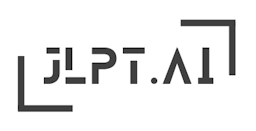

N2
音読み:nyuu
訓読み:chichi, chi, me
ニュウnyuu
ちちchichi
ちchi
めme
Milk, breast
Imagine a mother breastfeediing her baby, providing nourishment and care. The kanji '乳' represents the bond between mother and child through the act of breastfeeding.
The kanji '乳' is considered advanced and is less frequently encountered in JLPT materials. It may appear in higher level exams like N2 or N1, particularly in specialized vocabulary related to nutrition or health.
ベビーメグミルクは乳児の栄養に適しています。
Baby formula is suitable for infant nutrition.
べビーメグミルクはにゅうじのえいようにてきしています。
bebi megu miruku wa nyuuji no eiyō ni tekishiteimasu.
母乳は赤ちゃんに最も良い飲み物です。
Breast milk is the best drink for babies.
ぼにゅうはあかちゃんにもっともいいのみものです。
bonyū wa akachan ni mottomo ii nomimono desu.
彼女は乳製品を食べるのが好きです。
She likes to eat dairy products.
かのじょはにゅうせいひんをたべるのがすきです。
kanojo wa nyuuseihin o taberu no ga suki desu.